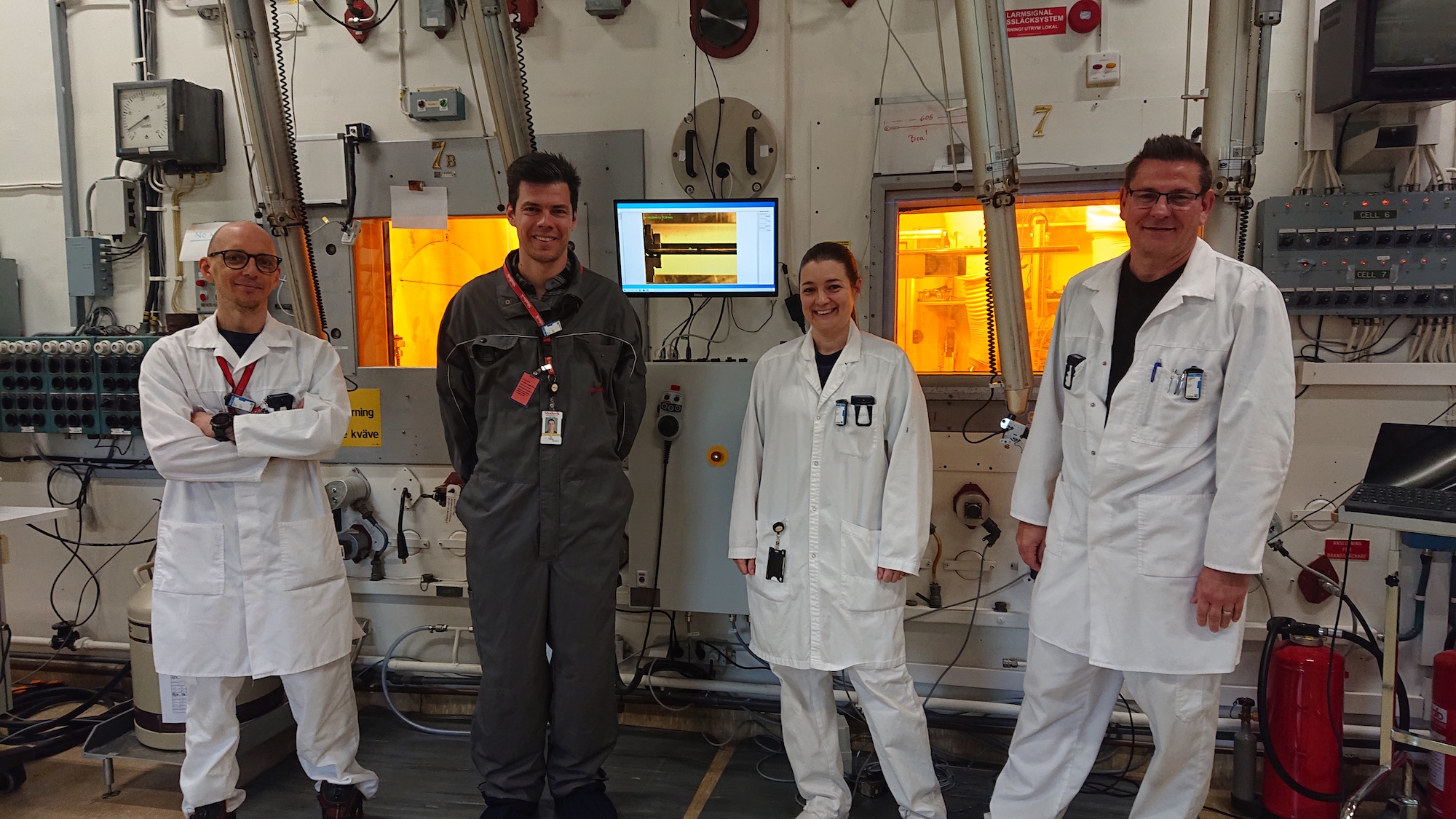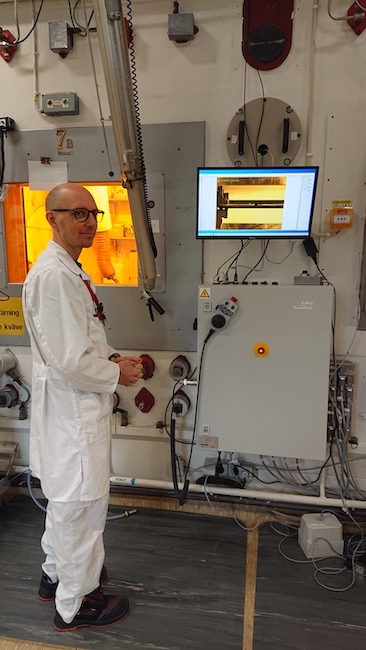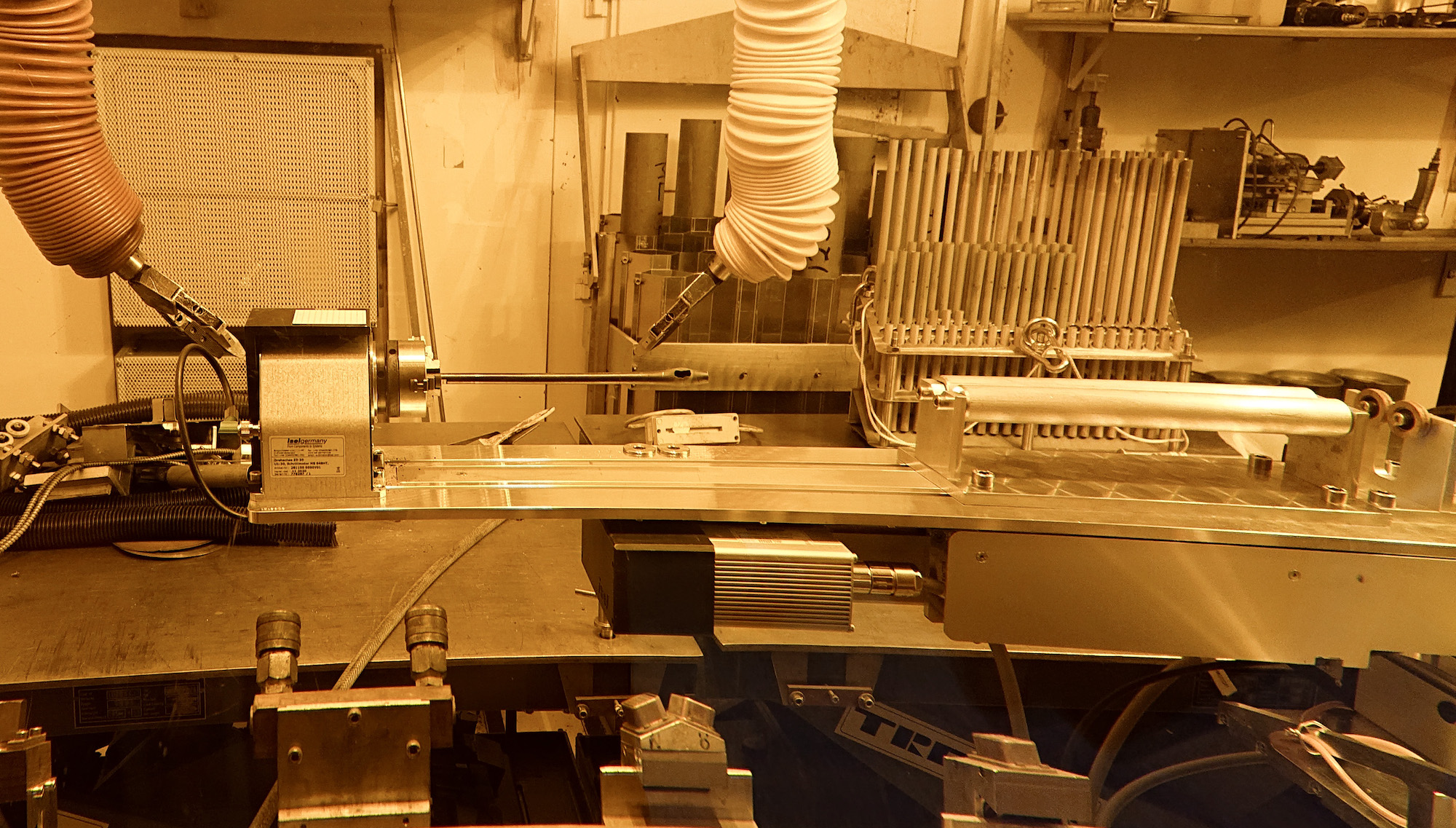
Studsvik Nuclear AB operates within the field of nuclear technology to improve reactor performance and reduce risks and costs related to nuclear and radioactive materials. One of Studsvik’s main areas of focus is fuel and material testing, in which they are world leading. DVel is one of Studsvik’s partners, delivering custom equipment needed for their material testing and inspection.
In the picture – Project team at Studsvik
Periscope measurement system
In 2020, Studsvik decided to upgrade and replace parts of the periscope equipment used for visual inspection of nuclear fuel rods and other highly radioactive materials. The equipment is one of the most utilized and central equipment in their laboratory. The results from the inspections are a vital part of the documentation of the investigated component’s status and they are used to identify what features need to be studied in further detail with other techniques. The aim of this upgrade was to increase the capacity and flexibility of the visual inspection.
The inspections are done inside a so-called hot cell, a highly shielded area with thick concrete and lead glass walls. Objects inside the cell are maneuvered from the outside using manipulators. With the previous periscope equipment, the inspection of a single fuel rod could take several hours since the operator had to manually move and inspect the samples. The manual operation also made the inspection results operator dependent, whereas a modern system could support a highly automated image collection including improved color and contrast calibration.
Dealing with changing project requirements
The project was initially intended as an upgrade of the old inspection system but when a mechanical mechanism in the old periscope started to malfunction, the project developed into a complete replacement. It was also decided that the translation stage should be replaced enabling a fully automatic inspection of fuel rod thus increasing the flexibility of the system fur. As the precise functionality evolved throughout the project, with several advanced features added at a late stage, the close cooperation between Studsvik and DVel was of great importance.
Want to know more about how we can help you?

Hardware and software features
The periscope equipment was replaced by a simpler optical setup. A camera and a zoom objective are placed inside the wall of the hot cell and a mirror, placed at a 45-degree angle, enables a view of the rod from above. The fuel rod can be rotated and translated along three perpendicular axes, so that every part of the rod can be inspected and photographed. The operator can either manually move and take pictures of the rod or choose to perform an automatic inspection. Camera and light settings can be adjusted to achieve the best possible image quality, something that is often a challenge in the hot cell environment due to the strong yellow light of its sodium lamps.
The images are calibrated to provide the real-life position of each pixel and this calibration information is stored together with the images so it can be used during future inspections. By using the associated analysis software, distances, and sizes of defects on the fuel can be measured in the captured images. The software also enables the user to change the color balance of the images and look at two successive images together. There are also features to resave an image and to easily save information about the position of a defect together with a related comment. The bulk of the visual inspection can thus be performed outside the hot cell, greatly reducing the bottleneck effect of the in-cell inspection.
Improvements with the new measurement system
The new inspection system does not only secure the continued operation, but Studsvik’s measurement capacity is also significantly increased since many of the new system features are automated. One key aspect is that the inspection of a fuel segment is substantially faster than before, increasing the utilization of the hot cell. For instance, the time to carefully image a one-meter fuel segment has been reduced from several hours to about 30 minutes. The inspection system can also be operated remotely which improved the ergonomics for the operator. Additionally, both the inspection system and the translation stage can now be serviced without entering the hot cell, a great improvement since no shut down of the hot cells are needed during system maintenance.
The new system allows:
-
- Fast, automatic inspection of the whole rod.
- Automatic measurements of the diameter along the rod.
- Automatic stitching of images along a rod.
- Manual inspection of defects.
- Remote supervision and control.
- Data storage of image information, such as resolution, position, and diameter profile.
- Offline inspection of stored images.
In the picture – The inspection system inside the hot cell at Studsvik

Staying ahead of competitors
The close collaboration between Studsvik and DVel will continue to make sure Studsvik always stays one step of their competitors. DVel general knowledge of Studsvik’s many customized hot cell systems facilitates a proactive approach to the collaboration where smart new features can be developed successively when ideas emerge. This way Studsvik can develop their methods and techniques in an innovative way and keep on providing world leading services to the nuclear industry, which ultimately contributes to the global carbon-neutral energy supply.

Riki Virc
CEO
